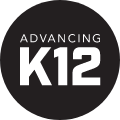
Why should I work for your school district?
As a prospective applicant, that’s the number one question on my mind, and the Internet will go a long way toward forming the answer. Your digital presence should tell me everything I need to know to get started. But does it?
Here’s where your candidates are looking, and what you can do to put your best foot forward:
1) Your Careers Page
Despite being the one place every potential candidate needs to visit to learn more about the application process, many school district career pages are laid out one of two ways:- A bullet list of open positions with links to the online applications
- A bullet list of open positions accompanied by several paragraphs of procedural and compliance verbiage
Your careers page is where you should be attempting to reflect the ideal version of what you want your district to look like. What are the defining aspects of your culture? What does a day in the life of your teachers look like? Why is your community an ideal place to put down roots? These are the questions you should be answering within this critical piece of Internet real estate.
How to Make It Better
Get visual! Videos, pictures from team events, social media posts from happy employees doing what they love. These are all easy ways to move your careers page from dull to attractive with very little work.Images trigger an emotional response in all of us. Your candidates will be mentally inserting themselves into the positive, enthusiastic, and collaborative culture you put forward on this page. School districts have developed a bad rap for what many perceive as rigid, inflexible, and disempowering work environments. If that’s not you, prove it with pictures. If you’re getting by with a couple small, stock images surrounded by text, what are you saying about your commitment to your people?
This is a perfect opportunity to reuse existing content. Take this opening day video from Washington’s Centralia School District:
How powerful would something like that be on your district’s careers page, accompanied by a short paragraph highlighting your district’s mission and the people who make it a reality?
2) Job Review Sites
Job candidates now enjoy the same kind of third-party validation we take for granted when making other important decisions, such as where to live or what to purchase. Employee reviews are being used by potential applicants to compare opportunities in the same field or region. It’s one thing for you to talk about culture, but there’s far more credibility in what your current and former employees are saying about it.If nothing else, the big two in this category — Glassdoor and Indeed — are to be ignored at your peril. Even small sample sizes of poor reviews can alter a job seeker’s perception and make your district less appealing to anyone with options.
How to Make It Better
Get proactive! Let your existing advocates know about these sites and why they’re so important to the health of your district. You never want to push people to leave reviews, but the simple act of raising awareness will have a positive result.Reviews are more likely to attract the extremes—those who left your organization on bad terms or those who are already your most ardent supporters. By acknowledging the existence of these sites, you’ll be painting a more accurate picture of what it’s like to work for your district.
Don’t forget to claim and personalize your profiles, either. There’s a lot you can do for free on these sites. Take ownership of your message and your brand by completing the brief overviews, adding visual media, and even responding to reviews when possible.
3) Your LinkedIn Page
Social fluency, living portfolios, and the pursuit of networking opportunities. These are three traits of a determined applicant—exactly the type of person you want to attract. But where can you find such enthusiastic professionals? There’s no better place than LinkedIn.LinkedIn boasts more than 133,000,000 users in the United States alone, and is one of the first places people are turning for information on job openings. This is where many of your prospective applicants will generate their first impression of your district, even before they visit your website.
And yet, a thorough review of this social media giant shows a severe lack of involvement from school districts. Many haven’t even set up a basic company page, and only a tiny smattering of districts are leveraging the power of LinkedIn for job posts and employment highlights.
How to Make It Better
Get posting! Even if you don’t want to pay for LinkedIn’s native job posting opportunities (though it’s worth looking into on sheer reach alone), you can still provide prospective applicants with an experience they’ll remember.First, if your company page is still unclaimed, claim it, then complete the “About Us” section and point people to your website for more information. Then, get consistent about posting new open positions, culture updates, and any other updates or recognition that might point to what sets you apart as an employer.
You can do this without much effort—just a post or two every week from your HR department or your communications team. The end result will be a boost to your district’s public perception as more connected, more transparent, and more interested in attracting top talent.
Filling the Gap
Even in districts with an otherwise strong digital presence, online, inbound recruiting avenues are some of the more overlooked opportunities for K12 HR departments. This is where your workforce lives now. This is how recruiting already looks in the private sector.The quality of education you’re capable of providing is entirely reliant on the people you have on your payroll. Better candidates mean better hires, and that’s what’s most important to your community and your students.
Follow-up resource: High-performing cultures
To learn more about building a high-performing culture (and why it matters), visit the library of resources we've put together on the topic here.WHAT'S NEXT FOR YOUR EDTECH? The right combo of tools & support retains staff and serves students better. We'd love to help. Visit skyward.com/get-started to learn more.

|
Advancing K12 Staff Edtech Thought Leaders |




